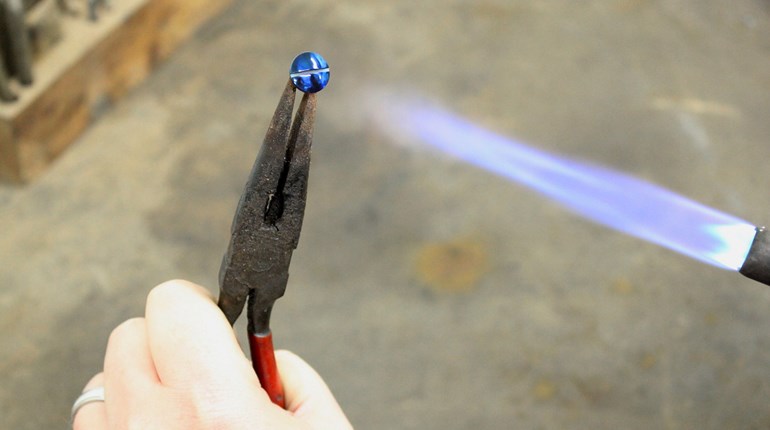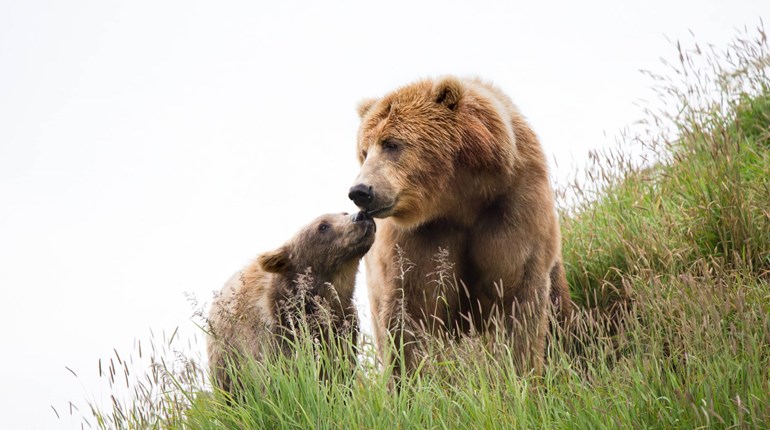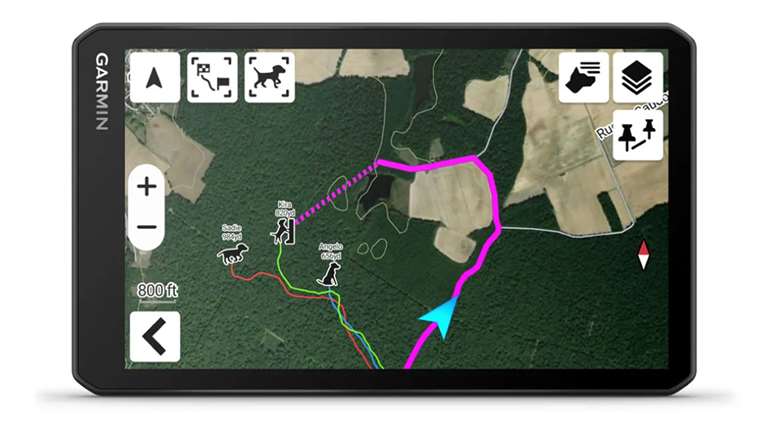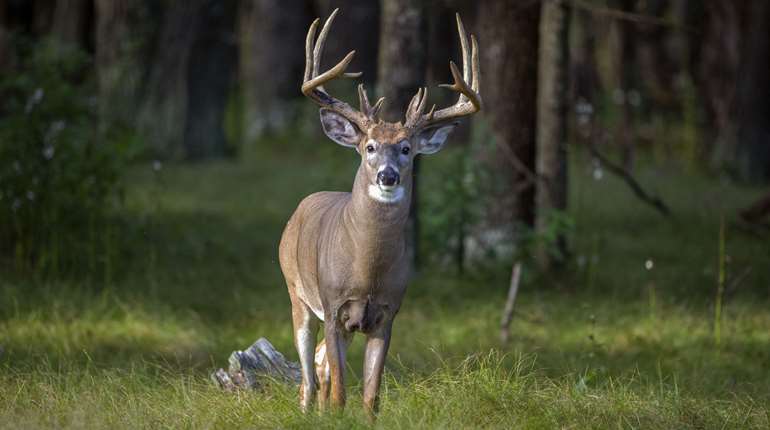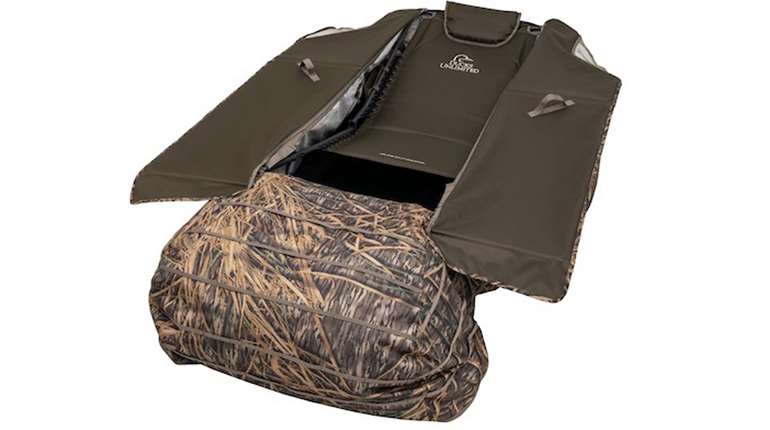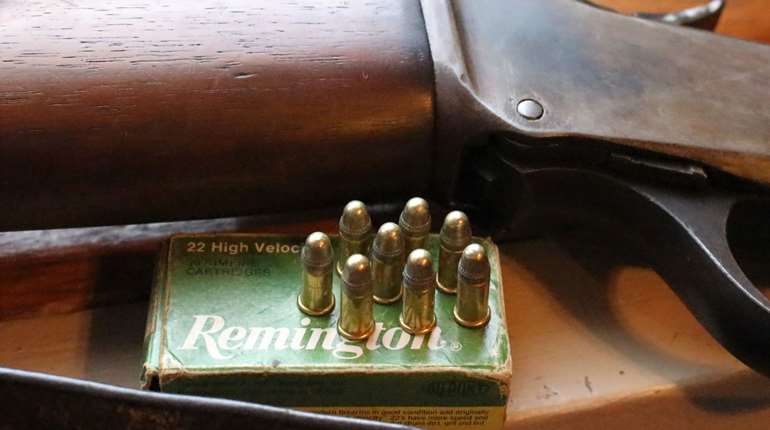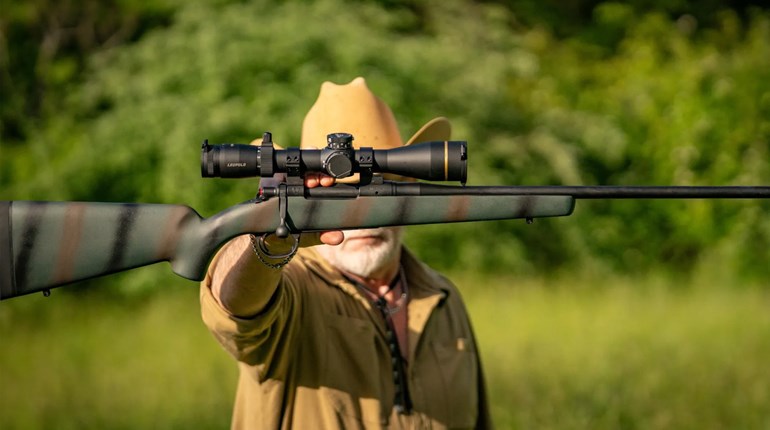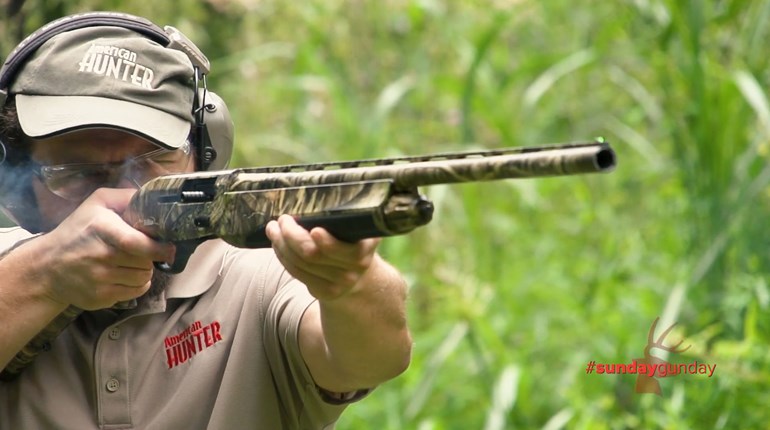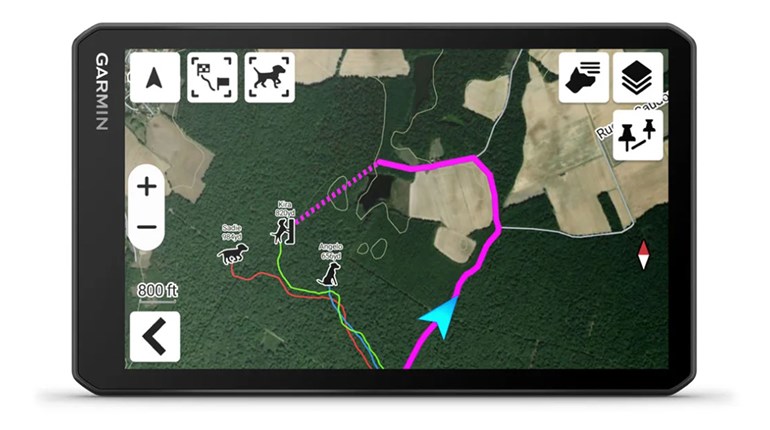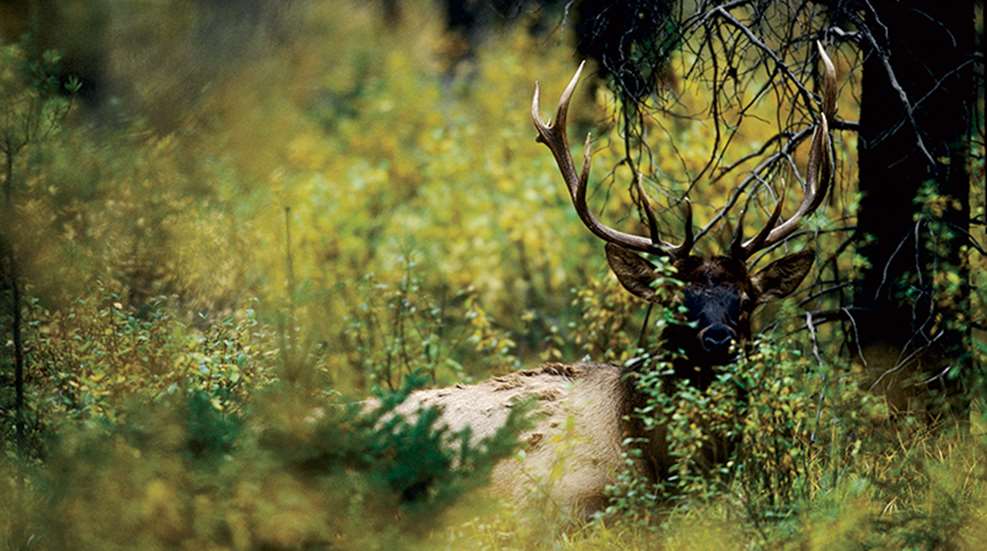
At 16 years old I had an epiphany: With one final stroke, and as hard as I could swing, I launched a golf ball deep into the woods and kissed the ball—and golf—goodbye. Even back then I realized that so frustrating a pastime wasn’t worth wasting my free time on, and in 32 years I’ve never looked back.
Sometimes bowhunting elk in the Rocky Mountains elicits similar doubts about how I spend my non-working hours. Trudging up and down steep slopes all day really isn’t as much fun as it’s cracked up to be, nor is it as easy as it once was. Years ago, I could hike 10 to 20 miles a day without whining. Now when I stop to catch my breath, hands on my knees and chest heaving, I frequently wonder, Isn’t hunting supposed to be fun?
Unlike golf, at least there’s a tangible payoff, whether it’s just being in the high country, a world away from everyday life, or hearing a bull bugle from some distant draw. It’s still amazing how a bugle 500 yards away can erase all the exhaustion you felt just seconds earlier, which I guess is why broken-down elk hunters like me still fail to grasp our limitations.
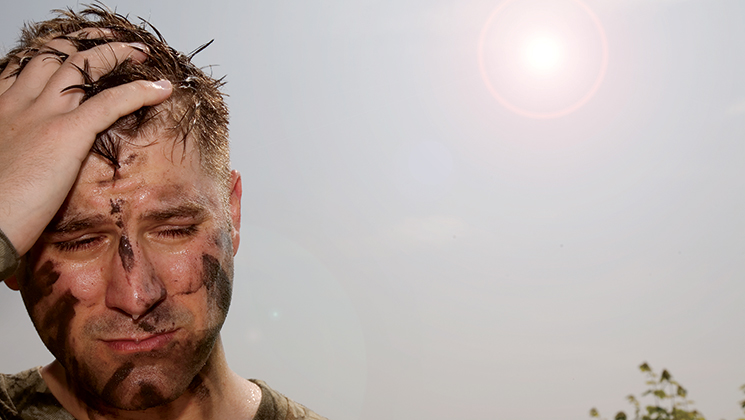
But there are times when even the most rabid, masochistic elk hunter can question his sanity; that’s likely to happen in the early season, when temperatures in the 70s and 80s put a serious damper on elk activity, including that all-important bugling. Hearing no bugles, especially in black timber where you can’t glass much country, means you’re often hunting blind, with no absolute confirmation that you’re doing anything right or that you’re anywhere close to a bull. When elk clam up for days on end, it’s easy to get discouraged.
So why bother hunting? Well, first of all it’s bow season! Second, most archers hunt later in the month, when bulls are bugling more consistently, so there’s less competition. Most importantly, when a bull does answer you now he’s more likely to come in—maybe not bugling a lot, but at least he’ll be coming in. Later in September, a bugling elk on the move will likely be heading the other direction, pushing his cows away from what he perceives is competition. Besides, even in warm weather there will be the mornings or evenings when bulls are extremely vocal, and you’ll usually have them all to yourself.
Hunting the early season takes a little more resolve, and may make you wonder if you’re beating yourself up for nothing, but if you modify your tactics you can definitely beat the heat and have an awesome hunt.
Where Bulls Go in Hot Weather
Bugling from ridgelines, where you can cover a lot of draws and basins, is normally the most efficient way to locate bulls. But when temperatures rise and bulls are quiet, you’ve got to drop down to their level. Heat makes elk lethargic and they do their best to avoid it, so you’ve got to focus on the coolest, and usually the moistest, terrain you can find. Generally speaking, that means east- and north-facing slopes (northern exposures in particular once the sun’s been up for an hour or so), although in the early morning southern and western slopes (where most open parks are found) can be prime hunting grounds as the elk begin to leave their feeding areas. Similarly, if you concentrate your late-afternoon efforts first on east-facing slopes, which fall into shade the soonest, you’ll have the best chance of finding active elk with plenty of daylight left. There are exceptions, but stick to areas with abundant shade.
Luckily, you can pinpoint the most promising areas with topo maps. Check out timbered north slopes that have narrow benches (level spots) that make good bedding areas, especially those near seeps or spring creeks. A bedded bull that was active all night probably isn’t going to bother answering a distant bugle, but he might come unglued if you happen to call within 100 to 150 yards. Close quarters certainly produce the most responses. Also look for finger ridges coming off north-facing slopes that might offer elk little pockets of cool security cover.
To zero in on the most productive spots, spend the first few days of your hunt covering a lot of ground. You want to find out exactly where the elk are holding. You’ll know by fresh droppings, sharply defined hoof prints along trails and creek crossings, and especially by the pungent smell of urine. If elk have been around the last few days, you’re going to smell them, and that’s your litmus test. Also, look for fresh rubs where shaved bark at the base of the trees is still moist and pliable. If you spend much time in places without these key signs, or without actually seeing elk, you’re just wasting your energy.
How to Get Overheated Bulls to Talk
During warm weather, lethargic bulls aren’t usually in a hurry to confront aggressive-sounding bulls, so trying to locate one using the biggest, baddest bugle you can muster is a mistake. Instead, start off with a few mellow cow calls, spaced over three to five minutes. Then try either a squeaky bugle, like a young bull, or a moan—a non-threatening sound like a domestic cow makes—which merely says, “I’m over here but don’t want any trouble.” I’ve located lots of bulls using soft moans, then worked close enough to get them actively responding to cow calls or bugles.
Just don’t call too sparingly before moving to a new location. When there’s plenty of fresh sign, don’t assume no bulls are present if a few cow calls or one bugle fail to get a response. I might bugle three or four times over 10 to 15 minutes, not aggressively but with the intent of goading a reticent bull into action. You don’t want to go overboard every time you stop to call, but when the area looks especially promising, why not? Over the years 70 percent of early-season bulls responding to my calls did so after the third or fourth bugle.
If you’re still having trouble locating bulls, consider bugling at night before you turn in. I usually camp fairly close to pack trails, since they’re the easiest routes into the backcountry and for exploring the country from camp. Simply hike up to a point away from camp where your map shows you can cover numerous draws or a big basin, then call. Bulls that are silent during the heat of day will often come alive at night. Just don’t stand there and continue bugling once you’ve got a response, or he might come in and smell you. Instead, pinpoint his location, then slip back to camp. That’s where to hunt the following morning.
While in my experience bulls usually aren’t vocal right at first light, you’ll want to be in close vicinity when they start, typically soon after sunrise. When the sun crests the horizon, temperatures will start to heat up fast, limiting elk activity and bringing on those dreaded changes in thermal activity in all but the most shaded timber. You’ll also want to hunt till dark. From the time shade first starts to cover eastern slopes till daylight fades, you’ll have perhaps the best opportunity of striking up a conversation. By that time the bulls are well rested, restless and are much more receptive to calls.
How to Hunt Sanctuaries
Whenever you find those cool pockets of timber that are lousy with fresh sign, spend at least 45 minutes there, perhaps an hour. Bulls don’t always bugle before investigating calls, and other times they might bugle once before slowly making their way in. If you’re too hasty abandoning a good spot, you’ll bypass a potential opportunity that needs time to unfold, while wasting precious time finding the next promising location. Worse, you might bump a bull that was on his way in.
Staying put is not good enough by itself. You’ve got to hunt smart, which means making sure you’re reasonably well hidden whenever you call (a bull could be nearby and sneak in silently), having an arrow nocked and being as still as possible while watching for approaching elk.
You’ve also got to monitor that fast-moving, high-arching sun. Nothing will betray you faster than moving when you’re highlighted in the sun. If you find part of your body suddenly bathed in sunlight, get back in the shade. There’s also no point setting up where you can’t get a shot. This sounds pretty elementary, but it’s easy to get lackadaisical when the action is slow. Still, get into the habit of assuming a bull’s going to show and you’ll automatically choose setups that keep you hidden while having adequate shooting lanes to cover the most likely avenues a bull will take.
One situation that’s not so easy to control is when you’re moving in on a bull. Since in hot weather they often stay in dense timber, you’ll find that the closer you get, the less shooting lanes you’ll have. If you’re not finding decent shooting lanes, but think you might bump the bull if you continue, back out and approach from a different angle where the wind’s still in your favor.
Finally, if the wind starts to swirl, try to find a more promising area where it’s more stable. To continue to work him now will likely result in him smelling you, in which case you’ve just ruined any chance of calling him in later on. When switching breezes are a result of thermals changing direction, leave for an hour, then come back once the thermal is blowing consistently up or down. The bull will probably be where you left him.
When to Change Tactics
When elk are on the move, early and late in the day, you should also be prepared to close the gap. If you hear a bull bugle, say, high up on a slope, and the next time he bugles he’s obviously covered a lot of distance, but not toward you, nothing you can do short of moving fast and getting in front of him is going to bring him within bow range.
Then there are times when you might have to change how you’re calling. Aggressive bugles might work from far away, but when a bull hears an aggressive bull getting closer, he may shut up. Early in the bugling season younger bulls often have cows. They might bugle a lot at times, yet they know they’re on borrowed time, so they’ll hoard what cows they can and avoid most threats; however if they hear a younger bull they may decide to challenge. If a bull’s staying put and quits talking, try coming in from a new direction and squeal on a diaphragm call. There’s a good chance he’ll walk right to you.
Cow calls can be deadly in the early season and are non-threatening to bulls, but don’t think, like one hunter once told me, that cow calls are always better than bugles “because bulls would rather be lovers than fighters.” A 3-year-old bull with a few cows is often content with what he has and won’t budge to claim another one. A good strategy in any sort of weather is to stick with the same calls that got the bull worked up and switch only when he hangs up or quits talking. That way you’ll have something new up your sleeve. The same goes for simulating a bull rubbing a tree. It can be deadly, but don’t play your hand when you don’t need to.
A Last Resort
As anyone who hunts in hot weather knows, there can be days on end when you can’t buy a bugle. That’s tough to take without getting down on your luck, but calling elk isn’t the only way to kill one. Orv Kuester, a former outfitter in Plains, Mont., has either killed or planned the demise of many early-season bulls without making a peep. When the bulls are silent, he hunts wallows and watering holes in the afternoon and ambushes elk as they’re leaving their feeding areas at first light.
To hunt wallows, Kuester makes sure he’s on stand by 3:30 p.m., the beginning of the hottest time of day, because when it’s hot and dry bulls like to cool off by rolling in muddy seeps and bogs. Seeps and springs also provide much-needed water for thirsty elk; and in areas where spring creeks are scarce they can make great stand sites.
Ambushing elk on trails leading to or from feeding areas takes a bit of scouting to see how the elk are coming and going, but it can be absolutely deadly. Four years in a row Kuester glassed elk using the same clear-cut at first light, then noted where they entered the timber and later found their trails. The next mornings, well before first light, he set up next to the trails a couple hundred yards inside the timber and killed a bull each year, two of them on the first morning he hunted.
On hot days when most elk hunters wouldn’t bother to hunt, Kuester stayed flexible and used his scouting abilities and good hunting sense to turn a big negative in his favor. This is precisely what bowhunters have to do when hunting tight-lipped elk in hot weather: Reduce miles of country down to specific hotspots of activity, then be patient and hunt smart. While at times you might think you’re busting your rear for nothing, remember it could always be worse: You could be playing golf.
What to Bring
Hot weather can be punishing, and hunting early and late can make for long days. Be sure your hunting pack contains, at minimum, the following:
• 1-quart water bottle
• Water-treatment pills or a filtration system
• Plenty of food, including high-energy snacks
• Two flashlights, plus spare batteries
• GPS and backup compass, plus topo maps
• Game bags, knife and sharpener for skinning and quartering game as soon as possible
• A space blanket
• Matches or a lighter













